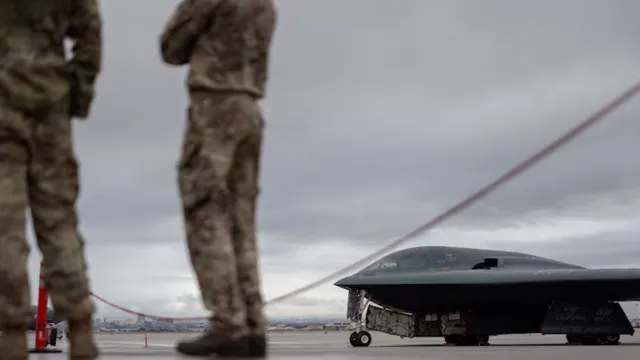- By Supratik Das
- Tue, 24 Jun 2025 04:51 PM (IST)
- Source:JND
As the world watched tensions unfold in the Middle East, the United States delivered a strong message in precision strikes on Iranian nuclear facilities, carried out by one of its most developed war machines, the B-2 Spirit stealth bomber. Called the "flying wing," the 2 billion USD plane is not only an emblem of military power, but a self-sustaining airborne home that can carry out missions of up to 44 hours. Hidden behind its radar-spooking fuselage and 40,000-pound bomb bay is a cockpit environment closer to a mini-apartment than a regular jet.
What It Takes To Fly The B-2
Even before they take off from Whiteman Air Force Base in Missouri, B-2 pilots prepare for weeks, not simply charting flight courses, but tuning their diets and sleep patterns. “We go through nutritional education, sleep studies, even learn how food affects digestion in the sky,” retired Lt. Gen. Steve Basham, a former B-2 pilot and US European Command deputy commander, said to Reuters. Basham's go-to meal was turkey sandwiches on wheat bread, no cheese. "As bland as you possibly can," he said. US pilots are also trained to be flexible of foods and how they slow or speed digestion, important in an aircraft with a single chemical toilet.
A 40-Hour War Room with a Microwave and a Bunk
Throughout Operation Midnight Hammer, which included strikes deep into Iranian nuclear sites such as Fordow, pilots flying on the B-2 did more than drop bombs; they lived airborne. Equipped with a microwave, mini-fridge, toilet, and a bunk space, the cockpit area allows pilots to heat meals, rest, and rotate duties during the long-haul intercontinental journey. Instant noodles, protein bars, and sunflower seeds kept alertness levels up. “You’re not just fighting fatigue, you’re making decisions that affect global security,” one pilot told The Independent.
ALSO READ: Six Iranian Missiles, Zero Impact: How PAC-3 Defended US Air Base In Qatar
Even though the B-2 has a 6,000-mile range without refueling, missions over Iran necessitated multiple mid-air refuelings, performed with no direct line of sight. "It's inherently risky. The boom comes in 16 feet behind your head. You go by light cues and recalled patterns," Basham described. At night, especially under moonless skies, even advanced fly-by-wire systems offer no comfort without full pilot focus.
ALSO READ: Indian Engineer Helped Design B-2 Stealth Bomber: But Why Noshir Gowadia Ended Up In US Prison
Its low radar, infrared, and acoustic signatures allowed the B-2 to enter Iranian airspace unseen, dropping bunker-buster bombs without provoking anti-air responses. It carried out its mission with no fighter cover, no ground forces. Invented in 1989, the B-2 has provided strategic bombing in Kosovo, Iraq, Afghanistan, and Iran. Even as newer planes such as the B-21 Raider are expected to replace it, the B-2 is still the best at long-range stealth operations. Coming in at around 65,000 USD per hour of flight time, the cost of the plane is covered by its efficiency and minimal-risk operational profile. “It’s not just flying a plane,” Basham emphasized. “It’s a combination of athletic endurance, tactical precision, and emotional control, while essentially living 40 hours in a pressurized combat capsule,” he added.

